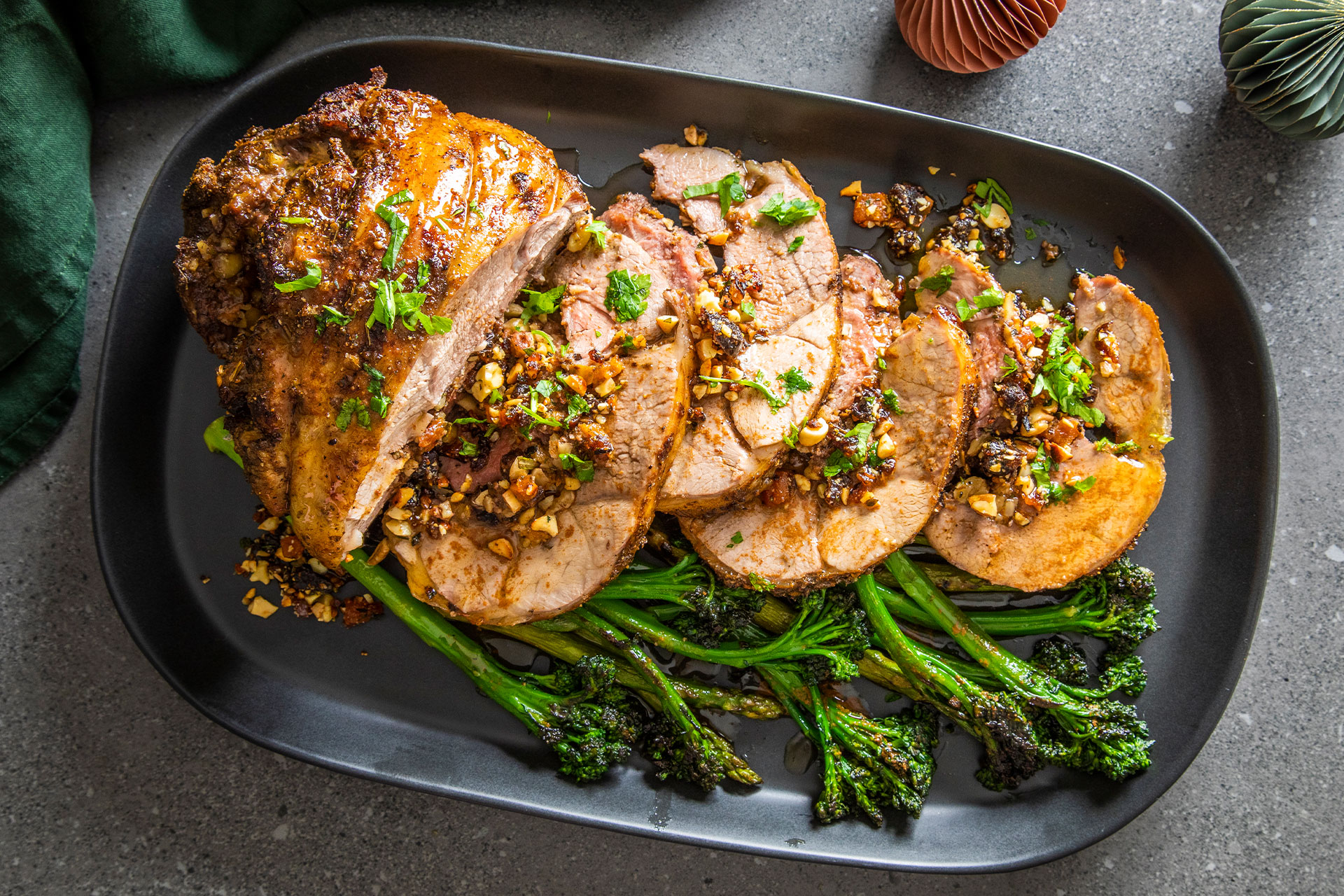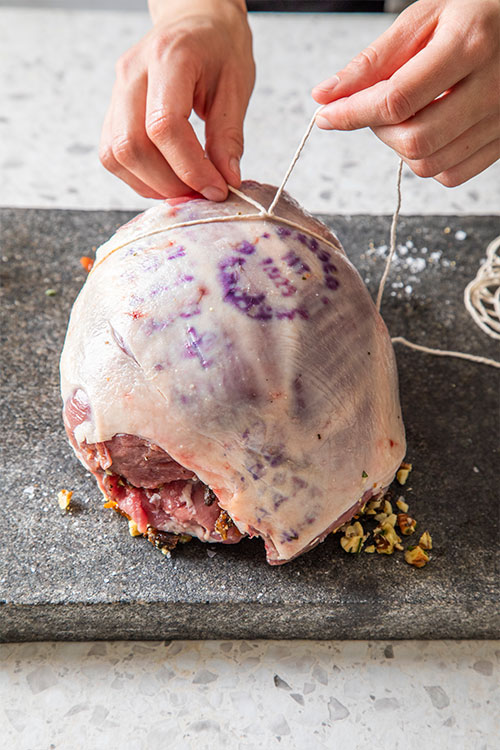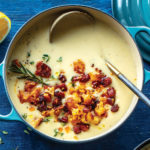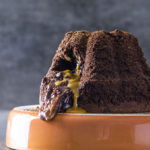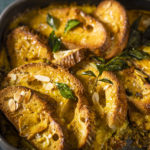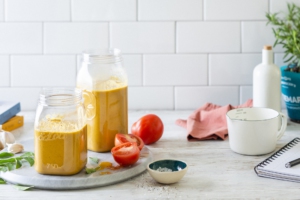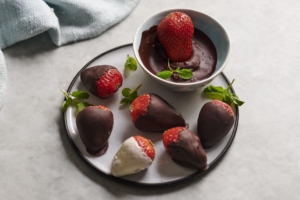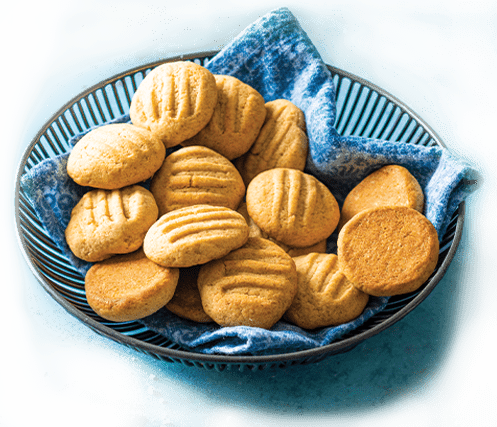Share
 Never trussed a lamb? We’ve got you covered with this easy-to-follow, step-by-step guide. Ask your butcher to debone your leg of lamb for you, or simply replace with deboned pork shoulder or beef roast.
Never trussed a lamb? We’ve got you covered with this easy-to-follow, step-by-step guide. Ask your butcher to debone your leg of lamb for you, or simply replace with deboned pork shoulder or beef roast.
THE KEYS TO TRUSSING
- Measure out your butcher’s twine, making sure it is 10 times the length of the lamb roll.
- Take care to keep the string tight and secure as you thread and knot the string.
- Regular knots will not work, as you won’t get enough tension on the roast. As the meat cook’s it shrinks, and if your knots are already loose, they will be even looser after cooking
WHAT YOU’LL NEED
- 1 (about 1.6-2kg) leg of lamb, deboned and butterflied
- Glug of olive oil
- 2 Tbsp (30ml) Moroccan spice rub
- Salt and milled pepper
- 1-2 Tbsp (15-30ml) butter
- Butcher’s twine
5 STEPS TO TRUSSING SUCCESS
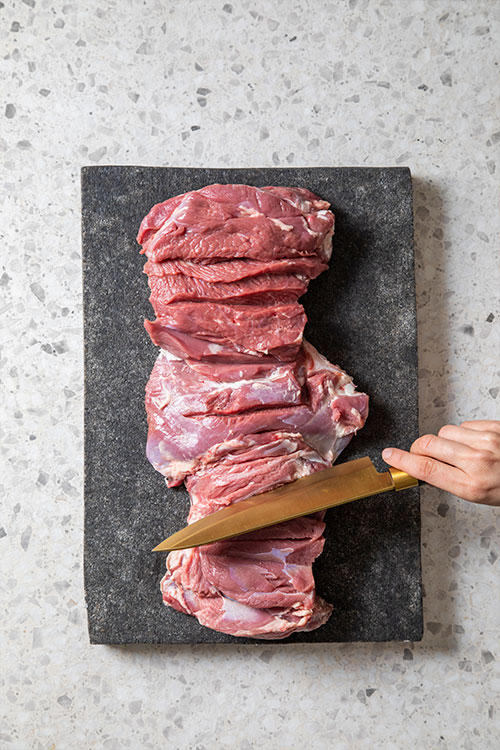
STEP 1
Lay lamb flat, fat-side down. Score inner flesh with a sharp knife. Drizzle with olive oil, rub with spices rub to coat well, and season.
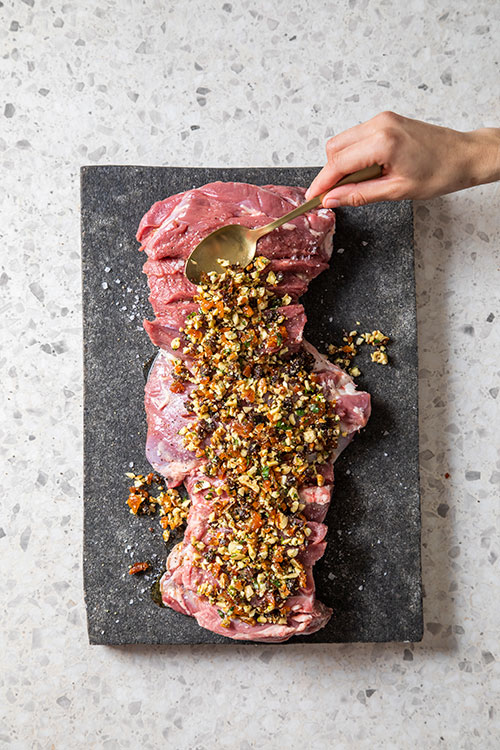
STEP 2
Spoon filling over lamb in an even layer (click here for full recipe).
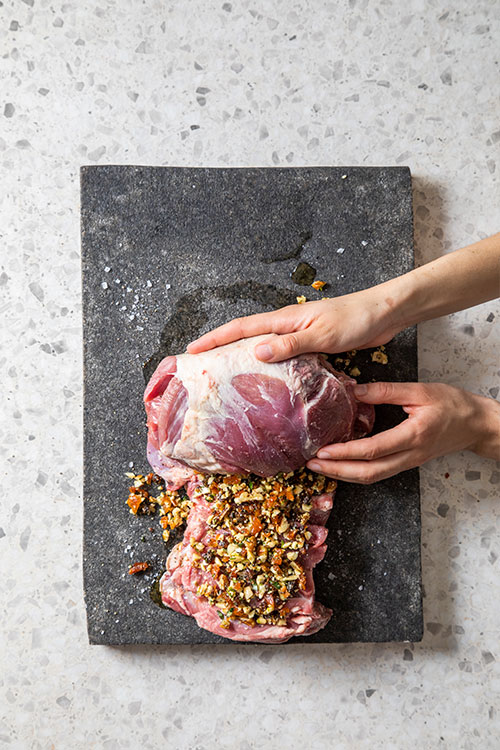
STEP 3
Roll lamb up into a tight roll (some filling might spill out; just push it back in using your hands or a spoon).
STEP 4
Thread the string underneath the lamb 2cm from the end. Hold one end of the string in your hand and wrap it around your fingers, then cross over the other end of the string and pull through the loop to create a slipknot.
STEP 5
Tighten the knot against the meat and secure with a second knot. Repeat all the way around the lamb roll, leaving 2cm spacings between each loop of string. Turn meat over and thread string through each of the cross sections, tightly securing each with a knot.
THE FINISHING STEPS
- Season outer fat layer with Moroccan spice and sear in a hot pan with oil and butter for 3-5 minutes a side’ until brown all around.
- Transfer to a roasting dish (if not using a cast iron pan) and roast for 60 minutes at 180°C.
- Rest lamb for at least 15 minutes before carving.
- Serve sliced with sautéed or roasted veg and pan juices.

